Following the Science: Ohio Higher Education – District Partnerships Build the Capacity for Improved Literacy Outcomes Across the P20 Continuum
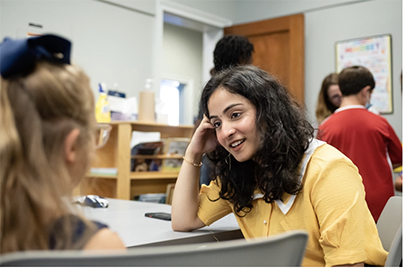
“Ohio’s commitment to equity for every child in every school and district in the state is a cornerstone of the state’s 2019-2024 strategic plan for education, Each Child Our Future. Equity in education, described as the plan’s greatest imperative and number one principle, means that “each child has access to relevant and challenging academic experiences and educational resources necessary for success across race, gender, ethnicity, language, disability, family background, and/or income.” (p. 8)
Each Child Means Each Child, released in March 2021, builds on the state strategic plan by identifying strategies for ensuring that Ohio’s education system “works” for all children, including those with disabilities and learning difficulties. “Working” means that the system is responsive to the needs of each child and accountable for preparing each child for success.
The imperative of teaching every child to read well is central to both plans. This grounding belief is stated clearly in Each Child Our Future: “The more literate an individual, the more capable he or she is of reaching education and career aspirations. One might say literacy is equity.” (p. 22).
One might say literacy is equity.
Each Child Our Future, 2019, p.22
Moreover, both plans acknowledge the urgent need to build the capacity of educators and others (e.g., families) to make use of evidence-based language and literacy practices:
Each child must have access to early learning experiences that are rooted in brain-development research and lead to kindergarten readiness. The research is clear: prenatal through third-grade experiences profoundly shape brain development. Without the ability to master fundamental language concepts, students likely will struggle in other learning areas. Furthermore, literacy skills must be a focal point throughout each child’s academic experience—from birth to high school graduation. (Each Child Our Future, 2019, p. 22)
The Science Behind Ohio’s Plan to Raise Literacy Achievement
Ohio’s Plan to Raise Literacy Achievement provides a framework and guide for educators at all levels of the system in the use of evidence-based language and literacy instruction and learning for all children, birth through grade 12 – what is commonly referred to as the science of reading (SoR). The plan debunks common misconceptions (e.g., the science of reading is only about phonics, the science of reading is one of many programs or approaches to teaching reading) and focuses educator professional learning on the development of foundational and extended literacy strategies including the Simple View of Reading (Gough & Tunmer, 1986), Scarborough’s Rope (Scarborough & Brady, 2002), and the four-part processing model for word recognition (Seidenberg & McClelland, 1989).

But the shift to using the Simple View, despite it being supported by education research, and research in cognitive science and neuroscience, is not always accepted by educators who have worked as literacy specialists for many years. Dr. Dottie Erb, formerly dean of Marietta College’s Education Department, explains:
I have a graduate degree in reading, taught reading methods, reading diagnosis, and reading foundations for years throughout my career and tried to stay current with IRA but when I switched to administration I got away from it. My conception of what was appropriate reading instruction was from the 90s and early 2000s and my perception of SoR was that it forced dyslexia instruction on all children, which I didn’t think was appropriate. Participating in the Compact’s P20 Literacy Collaborative and being exposed to the research and to literacy experts like Michelle Elia revolutionalized the way I think about reading instruction. I feel like I need to do penance for what I taught to teachers and teacher education candidates for a number of years using whole language and cueing systems – it wasn’t great for all children even though it might have worked for some children. In many ways, my involvement in the P20 Literacy Collaborative is an opportunity to give back.
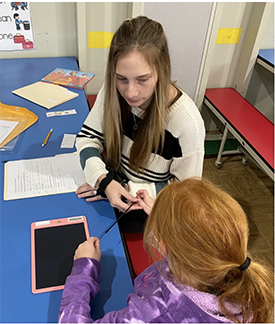
State leadership and support. The state’s approach to literacy improvement is based on a deep commitment to ensuring that all learners are supported throughout the continuum of language and literacy development, which includes emergent, early, conventional, and adolescent literacy (Ohio’s Plan to Raise Literacy Achievement, 2020, p. 18). Notably, Each Child Our Future strategy 9 addresses the development of language and literacy skills. In addition, several other priority strategies map onto this work including the employment of highly effective teachers and leaders, the provision of support to principals, the provision of support to teachers and others on instructional teams, the expansion of quality early learning, and the transformation of high schools in order to provide more pathways to graduation.
With leadership from Dr. Melissa Weber-Mayrer, Director of ODE’s Office of Approaches to Teaching and Professional Learning, state initiatives to facilitate, scale, and sustain the implementation high-quality evidence-based language and literacy instruction for all children, birth through grade 12, is supported by four full-time staff working to build a robust statewide support system through Ohio’s regional State Support Teams (SSTs) and educational service centers (ESCs).
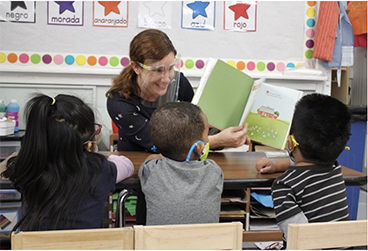
The ODE team provides overall guidance and oversight for statewide implementation of $78.2 million in federal literacy grant funding, 95% of which goes directly to Ohio’s local education agencies, birth to grade 12. This funding includes direct support to 42 Striving Readers grantees, three Model Demonstration Dyslexia grantees, and up to 64 Comprehensive Literacy State Development grantees.
The team also supports the direct development of 17 Regional Early Literacy Specialists, two Ohio Literacy Leads, and two Adolescent Literacy Specialists.
All state-sponsored work is facilitated through two ODE literacy units: the Policy Unit and the Literacy Implementation Unit. A brief listing of the state initiatives, the relevant Ohio Revised Code (ORC) sections related to various initiatives, and related selected activities, are presented in the textbox below:
ODE Literacy Policy Unit
(LM Clinton, JD and Sherine Tambyraja, PhD)
- Third Grade Reading Guarantee (ORC 3313.608): providing implementation support and technical assistance to districts for the K-3 reading diagnostic, Reading Improvement and Monitoring Plans (RIMPs), alternative reading assessments and third-grade teacher qualification requirements.
- Ohio’s Dyslexia Support Laws (including dyslexia screening measures (ORC 3323.251), professional development for identifying dyslexia and instructing students with dyslexia (ORC 3319.077), a multi-sensory structured literacy certification process ORC 3319.078 and the Ohio Dyslexia Committee (ORC 3323.25)
- District Reading Achievement Plans (ORC 3302.13 & OAC 3301-56-02)
- Ohio’s Rule for Phonics (OAC 3301-33-01) and District Reading Improvement Plans [ORC 3301.0715(G)]: guiding the development of the Ohio Dyslexia Guidebook, organizing content and logistics for the Ohio Dyslexia Committee’s monthly meetings, and providing districts with implementation support and technical assistance
ODE Literacy Implementation Unit
(Beth Hess, JD; four literacy specialists, one per grade band birth-school age, K-5, 6-8 and 9-12 )
- Guides the implementation of $78.2 million in federal literacy funds (Striving Readers Comprehensive Literacy grant, Comprehensive Literacy State Development grant and a Model Demonstration grant focused on building district capacity to address dyslexia
- Oversees the work of two Ohio Literacy Leads, two Adolescent Literacy Leads, and 16 Regional Early Literacy Specialists housed in each of the 16 SSTs who provide professional learning opportunities and direct support to districts and others around the implementation of Ohio’s Plan to Raise Literacy Achievement by
- Designing and implementing statewide supports for literacy improvement (e.g., Literacy Academy, peer and instructional coaching, Administrator guidebooks, support for the Ohio Literacy Library)
- Providing technical assistance for Comprehensive Literacy State Development (CLSD) Grant subgrantees
- Supporting implementation of statewide activities for the Striving Readers Comprehensive Literacy Grant and the Comprehensive Literacy State Development Grant
- Supporting implementation of the Model Demonstration Project for Early Identification of Students with Dyslexia Grant
- Implementing the programmatic components of Ohio’s Dyslexia Support Laws
- Supporting the State Systemic Improvement Plan - Early Literacy Plan
- Implementing Section 265.240 of the budget bill, which awards grants to expand model demonstration dyslexia activities to public and non-public schools
- Designing professional learning opportunities aligned to SoR
- Overseeing and supporting the regional literacy networks
- Implementing the State Literacy Network
- Supporting the Regional Support Teams for Literacy (ESC and SST collaboration)
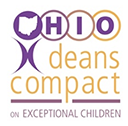
The Role of Higher Education – It Matters!
In 2018-2019, the Ohio Deans Compact, working in collaboration with ODE, convened the Higher Education Literacy Steering Committee (HELSC), composed of members from higher education, school districts, professional associations, regional providers, and state agencies. The charge to the HELSC members was to “develop a model/prototype for required reading course curriculum that could be used by Ohio’s teacher preparation programs to elaborate evidence-based, clinical practices for preparing candidates to provide literacy instruction that meets the needs of each child, including students with disabilities and other learning challenges.”
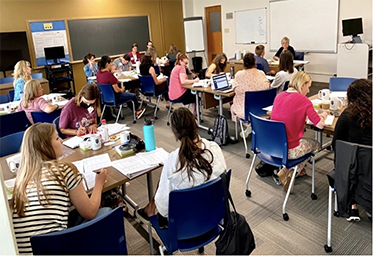
The Committee was guided by a commitment to productive and sustained P20 partnerships. As current research demonstrates, such partnerships are especially valuable for supporting educators (e.g., teachers, intervention specialists) – through preparation and ongoing professional learning – to teach all children, including those with diverse learning needs, to read.
The year-long HELSC study and collaborative learning process resulted in a set of model syllabi for core reading courses that any institution of higher education in Ohio could use to strengthen reading coursework. The model syllabi and supplemental resources were posted on the HigherEd Literacy Toolkit website, providing universal access to all Ohio educators across the P20 continuum.
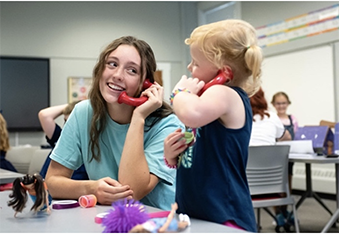
Beginning with the 2019-2020, school year, the HELSC Committee was reconstituted as the P20 Literacy Collaborative with membership including the original HELSC members and others representing higher education – school district teams, each of which was working to implement an Improving Literacy Partnership Grant through the Compact.
This larger group continues to meet quarterly. The aims of the collaborative are (1) to provide opportunities for members to learn from each other and from national and state leaders in the area of literacy and (2) to provide feedback to the Compact on literacy grant implementation activities and implications for scaling effective practices statewide.
Promoting Shared and Collective Learning Around SoR
The Compact's P20 Literacy Collaborative functions as a community of practice (CoP) that:
- Allows for the identification of possible alignments and gaps between preservice preparation and in-district practice with regard to the use of evidence-based early language and literacy instruction;
- Fosters shared understanding on the part of higher education and school district faculty of curricular improvement processes and shared ownership of curricula developed through the project beyond individual faculty;
- Identifies strategies for "bridging" the preparation to practice continuum (i.e., the transition between what educators are able to do upon leaving preservice programs and what teaching reading to diverse learners asks of them); and
- Provides a forum for shared learning and greater mutual understanding and appreciation among representatives from higher education, school districts, regional entities (e.g., state support teams), and other partners groups.
P20 Literacy Colllaborative members also participate in quarterly meetings of the Ohio Deans Compact where they have the opportunity to learn from other IHEs and IHE-district teams that have received incentive grants supporting other efforts, such as the development of inclusive teacher preparation programs leading to dual licensure (DL) in general and special education.
An exemplar. Considered a leader in evidence-based literacy preparation grounded in SoR, Mount St. Joseph University (MSJ) has participated in the Compact and the P20 Literacy Collaborative, receiving several incentive grants to develop blended DL preparation programs and strengthen literacy teaching.
According to Dr. Laura Saylor, Dean of MSJ’s School of Education and member of the Ohio Deans Compact, the Mount has had a clear focus on SoR for the past dozen years or so in its master’s of education program, which is designed for people who already have a teaching credential.
However, in the undergraduate program, there had been only some instruction in SoR, with some faculty also teaching whole language and other approaches to reading instruction.
Saylor credits MSJ’s work to develop dual licensure programs with helping the college design and implement a unified and coherent approach to educator preparation. This approach prepares candidates to teach using evidence-based literacy practices. “We decided to stop offering discrete programs and only offer the DL program. That decision coincided with our involvement in the P20 Literacy Collaborative and we realized that literacy instruction based on SoR needed to be a part of all undergraduate programs. Before this shift, candidates got a little bit of everything; it wasn’t particularly helpful for 20-year-olds to hear competing messages. Now they’re getting a consistent message. It wouldn’t have happened without the DL incentive grant,” she added.
Development of Authentic P20 Partnerships is Key
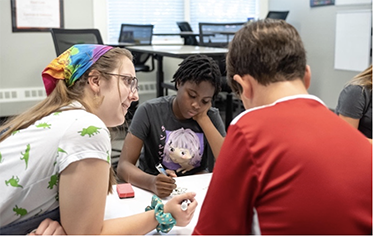
MSJ has partnered with nearby Oak Hills Local School District and, in particular, C. O. Harrison Elementary School to support effective literacy instruction while also providing teacher education candidates with opportunities to work with K12 teachers and students. School psychologists and speech-language pathologists, in addition to teachers and other staff, continue to be actively involved in expanding the use of SoR districtwide. An IHE-district team has participated in Compact-sponsored LETRS training in addition to other opportunities to increase capacity in the use of evidence-based literacy practices.
Breaking down barriers. “The P20 and LETRS PD played a big role in helping us to break down silos – between general ed and special ed, and between P12 and higher education,” explained Saylor. “Our goals are the same and should be,” she said.
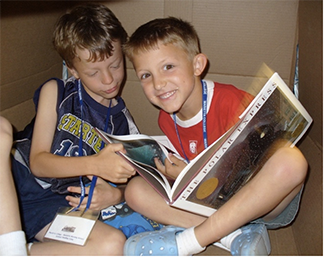
For example, “Walsh has built a strong relationship with the Bedford City Schools by supporting LETRS professional development through the statewide network, and direct support from Walsh faculty who have provided Zoom sessions to support implementation of structured literacy strategies and actions,” said Brobeck. Establishing and maintaining strong mutually beneficial higher education – school district partnerships is essential to teaching all teachers to teach all children to read well,” he added.
Brobeck coordinates a statewide network involving four regional “lead” IHE representatives (from Bowling Green State University, University of Findlay, Lake Erie College, Marietta College, and MSJ) to provide ongoing support to over 200 educators participating as part of IHE – district teams in the Compact-sponsored LETRS PD.
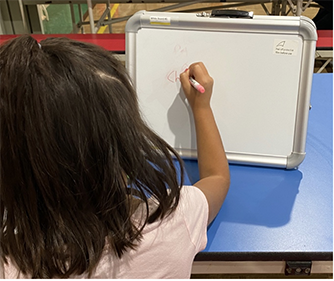
Marietta College redesigned teacher preparation programs through Compact-funded incentive grants, phasing out discrete programs and using only DL programs. Faculty have partnered with Marietta City Schools – the College’s largest partner district – through an Improving Literacy Partnership Grant and have also participated in LETRS professional development as an IHE-district team. “For the clinical portions of our reading courses, Marietta is placing teacher candidates in Marietta City Schools because of the district’s commitment to SoR,” said Erb.
“The grant was a critical piece, not that this can’t be done without grant dollars. But the grant allowed faculty members Drs. Raven Cromwell and Amanda Rider to work intensively with partner districts and to participate in a statewide effort and know that they weren’t doing this by themselves,” added Erb.
ALL benefit. Erb believes that candidates and the children served by them now and in the future will benefit from the use of evidence-based literacy instruction aligned with SoR. “In the past, we were great at teaching strategies without any knowledge behind their use. Now, candidates will graduate with the knowledge to understand why a particular strategy works or doesn’t work, and the ability to look in particular schools and know why they have students not achieving. They’ll leave with the confidence to be change agents, able to meet a broader range of student needs. Many of them become employed in districts in southeast Ohio that have huge literacy issues with many students not meeting the 3rd grade reading guarantee in any of buildings where our students are placed.”
Dr. Cassandra Johnson, Interim Superintendent of Bedford City Schools, agrees with Brobeck and Erb and appreciates the benefits of the Bedford-Walsh partnership: “We believe that it is imperative to equitably implement high quality, evidence-based practices that ensure every child improves their reading skills. LETRS has provided very practical evidence-based instructional literacy strategies for our early childhood teachers. These strategies are assisting our teachers to meet students where they are academically and therefore positively impacting the literacy success for each student regardless of their race, gender, academic ability, or economic status. LETRS has supported our mission that ALL students can achieve!
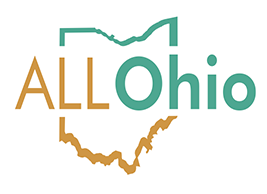
The UC SDI Center works as a partner in supporting the state’s work to improve literacy teaching and learning on behalf of all children and youth. The Center is coordinating the development of the ALL Ohio website, an interactive website that houses a variety of professional learning materials for Ohio’s P20 education system.
A main feature of the ALL Ohio website is the Ohio Literacy Library, which allows educators to engage in asynchronous professional learning through comprehensive learning modules that are universally accessible to all who are interested in using them. The modules explore various literacy topics in-depth through narrative text, linked resources, realistic scenarios, reflections, learning activities, and embedded audio and videos.
The Simple View of Reading module is recommended as the first module to be completed, because it provides foundational information relevant to all other modules. In addition, the first two modules of a five-part series on word recognition are currently available on ALL Ohio, as is the first module in an adolescent vocabulary series. These series will be completed in 2022, along with an 8-part series on evidence-based literacy instruction for English Learner students.
Also under development, is an online learning module to be offered through the website of the Ohio Leadership Advisory Council (OLAC). Guiding the development of the module is a panel of higher education, district, and regional representatives with expertise in evidence-based literacy instruction. Due to be released in summer 2022, the module will be particularly relevant to leaders at all levels of the education system. It will help them gain greater understanding of evidence-based literacy practices and show them how to use the Ohio Improvement Process (OIP), with its collaborative team structures (i.e., district leadership teams, building leadership teams, and teacher-based teams), to prepare for, implement, and support systemwide use of evidence-based literacy instruction.
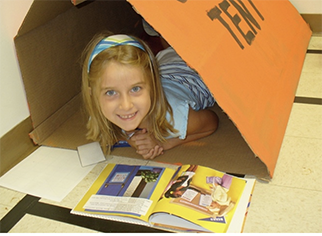
What’s needed? “I would love to see more engagement of IHEs and P20 partners working together to use evidence-based literacy instruction grounded in SoR. The closer we get to P12, the more we see teachers that want this training. And, the more that IHEs and ODE get the voice of P12 in the conversation, it tells such a compelling story that you can’t not do it. The Hunt Institute work is important and it is moving; I get the sense that there’s an exponential effect in how the work is progressing,” reflected Saylor.
Erb, who co-facilitates the P20 Literacy Collaborative, agrees: “I’m not an advocate of forcing, but I would like to see more IHEs involved in the work and more people involved in the P20 Collaborative out doing more presentations at conferences to say here’s what SoR is, here’s why it works, here’s what it does for all kids, here’s how we incorporate SoR into our program. With this type of change, you see benefit down the road, several years from now when we have critical mass of teachers teaching reading the right way. It won’t be in the next year or two years from now. We need to stay the course.”
“Good lasting systems change doesn’t happen with a hammer; it takes time, commitment, and resources,” offered Saylor.
References
Gough, P., & Tunmer, W. (1986). Decoding, reading, and reading disability. Remedial and Special Education, 7, 6-10.
Scarborough, H. S., & Brady, S. A. (2002). Toward a common terminology for talking about speech and reading: A glossary of the “phon” words and some related terms. Journal of Literacy Research, 34(3), 299–336.
Seidenberg, M., & McClelland, J. (1989). A distributed, developmental model of word recognition and naming. Psychological Review, 96, 523-68.
For More Information
For more information about the institutions of higher education and their district partners featured in this issue of Cornerstone Connections, contact:
- Raven Cromwell, PhD, Assistant Professor of Education, Marietta College, at rnc002@marietta.edu.
- Laura Saylor, PhD, Dean, School of Education, Mount St. Joseph University, at laura.saylor@msj.edu.
- Cassandra J. Johnson, PhD, Interim Superintendent, Bedford City School District, at cjohnson@bedfordschools.org.
For more information about Ohio’s work to improve literacy outcomes for all children, contact Melissa Weber-Mayrer, PhD, Director, Office of Approaches to Teaching and Professional Learning, Ohio Department of Education, at Melissa.Weber-Mayrer@education.ohio.gov.
For more information about the All Ohio website and resources and/or about the P20 Literacy Collaborative, contact Jennifer Ottley, PhD, Senior Director of Research, University of Cincinnati Systems Development & Improvement Center, at ottleyjr@ucmail.uc.edu.
For more information about resources to support districts, contact Dr. Jim Gay, OLAC Co-director, at jimgay@basa-ohio.org; or Karel Oxley, OLAC Co-director, at Oxley@basa-ohio.org.